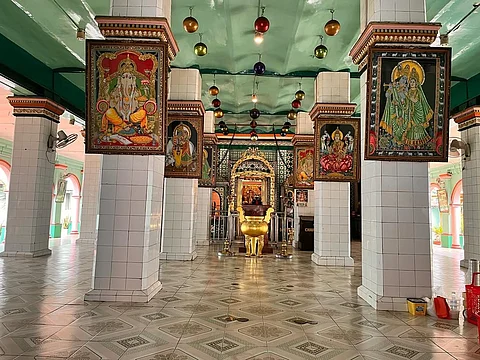
- Destinations
- Experiences
- Stay
- What's new
- Celebrating People
- Responsible Tourism
- CampaignsCampaigns
- Subscribe
- Buy Now

Nestled incongruously amid the bustling streets of District 1 in Ho Chi Minh City, the Mariamman Temple stands as a quiet testament to a forgotten chapter of the city’s multicultural past. Known primarily as Saigon until the country’s reunification in 1975, Ho Chi Minh City’s history is layered with stories of migration, trade, and cultural fusion. Among these, the tale of the Mariamman Temple offers a compelling glimpse into the enduring presence of Indian heritage in Vietnam, and the curious ways faith and circumstance intertwine.
While French colonial relics like the Saigon Opera House, Central Post Office, and Notre Dame Cathedral stand as stately reminders of a bygone era, just steps away near the famous Ben Thanh Market, another cultural landmark quietly commands attention. The Mariamman Temple, with its towering 12-metre-high raja gopuram, rises vividly amid the narrow lanes, offering a striking contrast to the colonial architecture and neon-lit streets.
The temple’s origins date back to the late 19th century, a time when Tamil traders from southern India’s Chettiar community sought new opportunities in the bustling port city in Vietnam. These merchants brought with them more than goods—they carried a rich cultural and religious legacy, centring on the worship of Mariamman, a Hindu goddess revered primarily in South India for her association with weather and fertility.
Initially, the community kept a small idol of Mariamman in a modest house that doubled as a shrine. As the Tamil population grew, so too did their need for a more permanent space of worship. By the mid-1880s, they commissioned the construction of a proper temple, importing craftsmen and materials from the Madras Presidency, then part of British India. The result was a temple crafted in the Dravidian architectural style—a striking homage to South Indian temple design, complete with elaborately carved gopurams (gateway towers) and vibrant sculptures.
But this was more than just a religious site. From the outset, the Mariamman Temple was a cultural hub for the Tamil community, hosting festivals and rituals that nurtured a sense of belonging far from home. Its yearly Simha Vahanam procession, featuring a lion vehicle carrying the deity’s idol through the streets, became a highlight for devotees, while the temple’s open doors welcomed not only Indians but also local Vietnamese and Khmer worshippers.
The 20th century saw the temple’s influence deepen. Its reputation as a place of spiritual refuge transcended cultural boundaries, drawing an increasingly diverse congregation. Yet, it was during the turbulent years of the Vietnam War that the temple’s place in the collective memory of Saigon was firmly cemented.
As North Vietnamese forces and Viet Cong insurgents clashed with American-backed South Vietnamese troops, Saigon endured devastating bombardments. Legend has it that while the surrounding blocks were reduced to rubble, the Mariamman Temple remained intact. More strikingly, several people reportedly sought shelter inside the temple for days on end, emerging unscathed. This seeming immunity from destruction transformed the temple in the eyes of locals—from a shrine to a goddess of fertility into a sanctuary of protection.
Today, the Mariamman Temple stands as both an Indian and Vietnamese landmark, a cultural palimpsest amid the city’s relentless modernisation. Its Dravidian architecture juxtaposes with the colonial facades nearby, encapsulating the layered history of Saigon. Visitors to District 1, after exploring the colonial grandeur of the Opera House or the vibrant chaos of Ben Thanh Market, will find in the temple a quieter, enduring symbol of faith, resilience, and cultural fusion.
The temple continues to draw worshippers lighting incense not only for traditional blessings but also for protection and peace—an embodiment of Saigon’s complex past and hopeful present. In this way, the Mariamman Temple remains a living monument to the power of belief and the rich cultural mosaic that defines Ho Chi Minh City.
Deities: The temple houses statues of Mariamman, along with her guardians Maduraiveeran and Pechiamman, and representations of the Hindu god Shiva.
Visitor Information: The temple is open daily from 9 AM to 8 PM and has no entry fee. Visitors are expected to dress respectfully, covering shoulders and knees, and remove their shoes before entering.
Location: 45 Truong Dinh Street, Ward Ben Thanh, District 1, Ho Chi Minh City.
